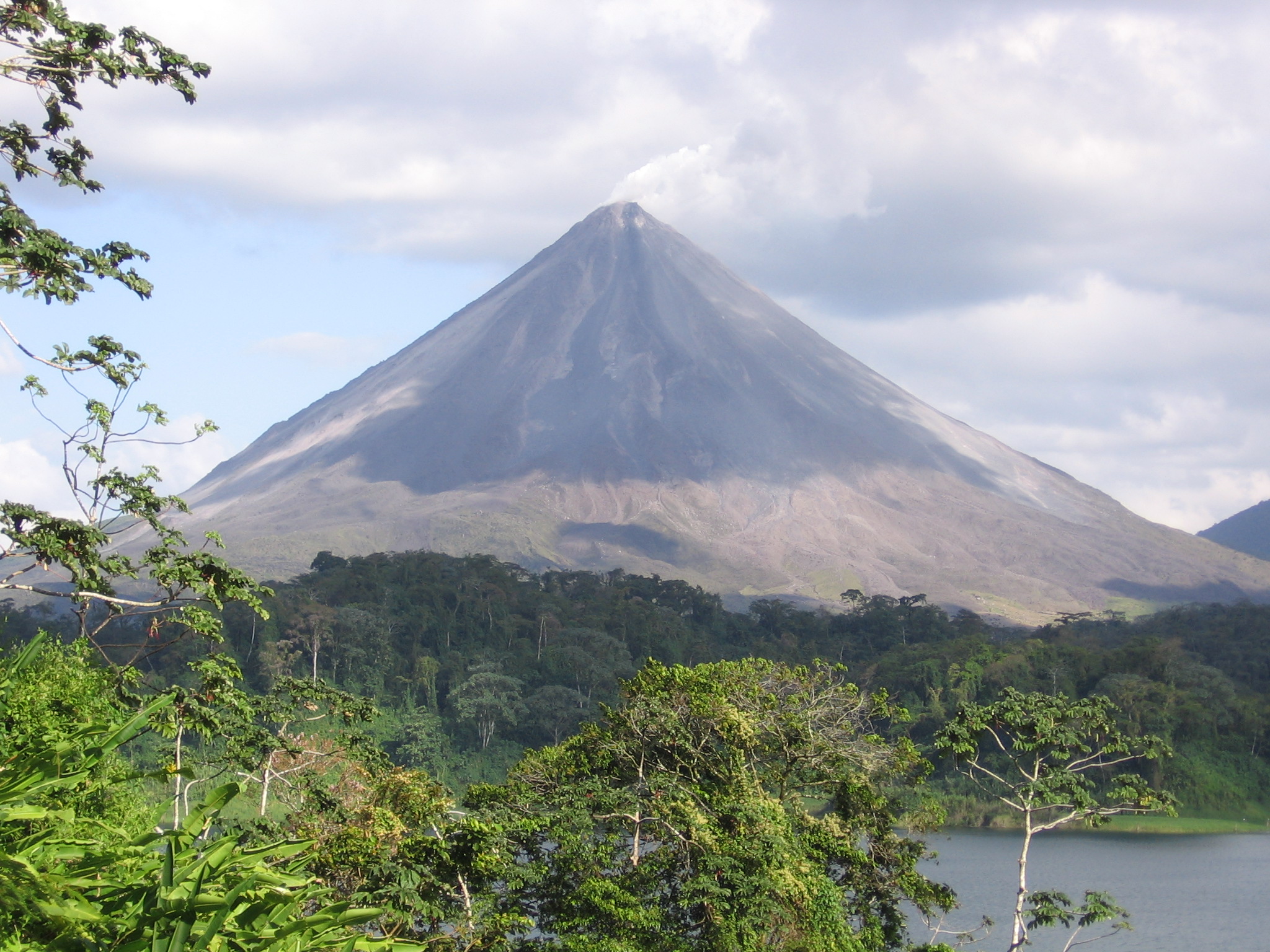“I’ve worked my way up from nothing to a state of extreme poverty.” – Groucho Marx in Monkey Business
Somewhere over the rainbow, there is no place like La Carpio. No place at all. My visit last Wednesday was so overwhelming, I’m having a hard time putting everything into words coherently. You know, like I usually do.
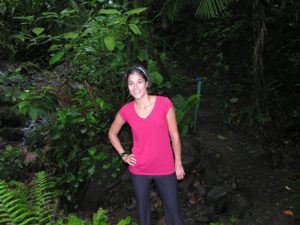 Somehow, I’m a member of Helping Hands Costa Rica (HHCR). I’m not really a joiner, but I wanted to meet more expats and here was a group looking for members. I had nothing to do one night and voilà: I’m in.
Somehow, I’m a member of Helping Hands Costa Rica (HHCR). I’m not really a joiner, but I wanted to meet more expats and here was a group looking for members. I had nothing to do one night and voilà: I’m in.
HHCR was started by Evangeline, a young woman with boundless cheery enthusiasm for the task of ending poverty. You think, “This kid is going to burn out.” But after being around her for awhile, you notice she is taking it as it comes, poco a poco. One shoe at a time. One colon at a time. That’s the only way to survive. She very well might. I don’t know about me.
 We rode with Gail Nystrom, founder of the Costa Rica Humanitarian Foundation and tireless humanitarian. The purpose was to see what she does in La Carpio. “Bring your cameras,” we were told.
We rode with Gail Nystrom, founder of the Costa Rica Humanitarian Foundation and tireless humanitarian. The purpose was to see what she does in La Carpio. “Bring your cameras,” we were told.
I have heard of La Carpio. It’s where the desperately poor live. People kill each other over there. I wasn’t afraid of dying. My fear is that I would be in a van full of gringos going to photograph the desperately poor. Would they wave and smile? I would never know unless I went. So I did. I dragged Mom along. Something to take our minds off her luxury vacation at the overpriced hellhole.
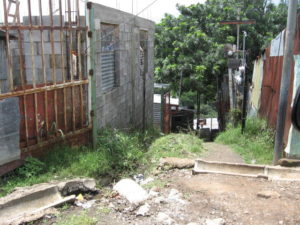 La Carpio is filled with refugees, mostly Nicaraguan, almost all illegal. Population is estimated at 35,000. That’s a lot of people. More than Key West’s year round population of 28K and squeezed into a smaller area. None of it oceanfront. The land is “donated” by the government: these guys are squatters. They’ve been here so long, the land belongs to La Carpio. I’m not clear on the finer points, but you can buy and sell your house… I think the land is akin to a leasehold.
La Carpio is filled with refugees, mostly Nicaraguan, almost all illegal. Population is estimated at 35,000. That’s a lot of people. More than Key West’s year round population of 28K and squeezed into a smaller area. None of it oceanfront. The land is “donated” by the government: these guys are squatters. They’ve been here so long, the land belongs to La Carpio. I’m not clear on the finer points, but you can buy and sell your house… I think the land is akin to a leasehold.
Housing styles range from cardboard to rusty tin to wood, many combinations, all held together with balance, spit and bread wrapper ties. In the nicer part of town, there’s more cement block. The one paved road is a godsend. Many homes have dirt floors. Outdoor plumbing.
One of the things Gail does is buy houses for the poorest of the poor living in the worst shanties down by the river. When you are the newbie in this community, you start at the bottom of the hill. Everything runs downhill, you know. Right down to the river. [There are questions to be asked about exactly how well Costa Rica is
preserving her natural resources. But this is not about that.]
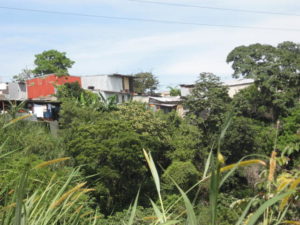 In the photo left, all the way to the right further down is the river. This is a tiny snippet of the whole. I couldn’t get enough perspective with my point and shoot camera.
In the photo left, all the way to the right further down is the river. This is a tiny snippet of the whole. I couldn’t get enough perspective with my point and shoot camera.
On our way into town, Gail drove us by the landfill. The stench was sickening and we could smell it in town, everywhere. The landfill was supposed to be here 10 years then closed. It’s now year 13, going gangbusters. A steady stream of trucks brought in the trash.
You could see the methane gas flowing furiously from the pipes stuck in the dirt. Rumor has it there are chemicals being dumped here, then released into the river. But it’s just a rumor.
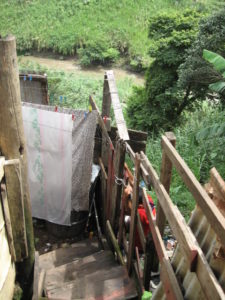 When the government was looking for a landfill location, they went from town to town. Each town said NIMBY. La Carpio said NIMBY, too. The government offered to give title to the La Carpio homeowners in exchange for allowing the dump. La Carpio thought it over, then said NIMBY. The government offered to send in immigration. La Carpio couldn’t fight that; they got a landfill.
When the government was looking for a landfill location, they went from town to town. Each town said NIMBY. La Carpio said NIMBY, too. The government offered to give title to the La Carpio homeowners in exchange for allowing the dump. La Carpio thought it over, then said NIMBY. The government offered to send in immigration. La Carpio couldn’t fight that; they got a landfill.
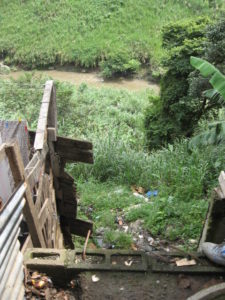 When Gail is househunting, she looks for the basics. A house has to have something other than a dirt floor; it must have an indoor bathroom. A room for a kitchen. Running water. A window would be nice.
When Gail is househunting, she looks for the basics. A house has to have something other than a dirt floor; it must have an indoor bathroom. A room for a kitchen. Running water. A window would be nice.
And before anyone starts in on how it’s better to teach people how to fish than to feed them, walk a mile in Gail’s shoes. If you don’t feed, clothe and house people this poor, show them some love, show them that they matter, they will die of apathy before they can bait a hook. Gail’s been doing this 17 years, the last 10 “officially” since she founded CRHF in 1997. She has a track record.
The only reason we were not treated like a bunch of curious gringos is because we were with Gail. She has earned their respect. They trust her.
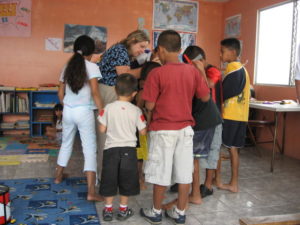 Gail used to come here everyday, for years. At the moment, she’s spread a little thin and can’t come everyday. She needs help, an assistant. She acknowledges that if she stopped coming, things would fall apart. She knows this because if she doesn’t come often enough, things begin to fall apart. If you live here day in and day out, like these people live, it would be hard to keep your spirits up. There is no hope here. Gail brings it in.
Gail used to come here everyday, for years. At the moment, she’s spread a little thin and can’t come everyday. She needs help, an assistant. She acknowledges that if she stopped coming, things would fall apart. She knows this because if she doesn’t come often enough, things begin to fall apart. If you live here day in and day out, like these people live, it would be hard to keep your spirits up. There is no hope here. Gail brings it in.
She doesn’t just buy houses. She’s done more, so much more and not just here in La Carpio. Read the details at CRHF.com. She’s opened a learning center for kids with toys, legos, games, a computer and the only library in the area. She’s opened a clinic where anyone is welcome.
There is another government run clinic down the road but that is only for ticos with papers. Nicas with no papers don’t get medical care – let’s not get into the politics, ok? At Gail’s clinic, everyone is treated. The cost is un mil ($2) but if they don’t have that, it is free.
We met Jessica, a mother of three. Gail bought a copier for Jessica so she can sell copies for 10 colones each (about 2 cents). Gail gives her new entrepreneurs supplies for a couple of months till they can get the hang of buying supplies and budgeting.
 We stopped by the police station and met the officer on duty. He said there had been two murders that week, two young men. Presumably over drugs. He was friendly, let us stroll around, not anxious at all. He said the danger was at night, not so much in the day. I did get a photo of his fridge: it’s like an old Chevy. The kitchen could some sprucing up.
We stopped by the police station and met the officer on duty. He said there had been two murders that week, two young men. Presumably over drugs. He was friendly, let us stroll around, not anxious at all. He said the danger was at night, not so much in the day. I did get a photo of his fridge: it’s like an old Chevy. The kitchen could some sprucing up.
Our last stop of the day, we visited with Maria, a mother of three (two teens and a little girl of six.) Maria was widowed two months ago. Her husband was killed in the U.S. where he was working legally, dragged out of his house and shot 15 times. She doesn’t know why and she probably never will. The company he worked for, Ironco, has been very supportive.
Maria is waiting to get the life insurance – there is some holdup, something about murder not being covered. Then, she will go back to Nicaragua where her mother lives. While we were there, her teens were watching TV: they stay at home all day because they have been threatened by the other teens here. It is dangerous for them. Maria is quite depressed. Jesus, I would be, too.
Evangeline reported on the day here. See? Cheery. Four hours at La Carpio was enough for me to digest in one week. Not Mom. She gathered up all the shoes in the house – I think we each have a pair left – and went back with Gail today to see the kitchen where they feed 50 kids everyday and a group of 15 community women on Fridays. Mom is going to make lunch next Friday; she’s all busy planning her menu. My mom is an excellent cook… they will want her everyday. Not to mention being a beacon of light her own self. With a little light and a dose of hope, you can get something started.
At the risk of being entirely corny, if happy little bluebirds fly beyond the rainbow, why oh why can’t anyone from La Carpio?
